There are thirty-five (35) good and fifteen (15) bad companion plants for arugula in this list, including plants such as alliums, flowers, herbs and more. Each variety is broken down and has explanations as to why they are good or bad for arugula.
Arugula, rocket, rocquette, colewort, garden rocket, ruchetta, eruca or rucola is an edible flowering plant in the cabbage family Brassicaceae. It is an annual crop cultivated for use as a salad vegetable, mostly, with its fresh, sourish and peppery flavor.
Arugula plants may grow anywhere from 8 to 40 inches long, with pinnate or featherlike leaves and creamy white flowers with purple veins. About 91.7% of this vegetable is water, 3.6% carbohydrates, 2.6% protein and trace amounts of fat.
The vegetable supplies vitamins A, A equivalent, B1 (thiamine), B2 (riboflavin), B3 (niacin), B6, B9 (folate), C, E and K, and the minerals calcium, copper, iron, magnesium, manganese, potassium, phosphorus, sodium and zinc to the body.
Arugula contains lots of antioxidants, vitamins and minerals so it is a healthy addition to one’s diet. Because it is a superfood, it may also protect the body against several kinds of cancer, supply lots of potassium and protect body cells from damage.
This plant grows well in several conditions but for the best results, grow arugula in cool weather but in a spot where it will receive full, direct sunlight daily or, at the very least, partial shade.
Maintain consistent moisture levels within the soil but do not let it get soggy because this plant has shallow roots. It can be grown in almost any soil but the best option would be loose loamy soil with slightly acidic pH of 6.0 to 7.0.
Arugula is prone to diseases and the infestation of several crop pests. It may be attacked by ants, aphids, armyworms, cabbage loopers, crickets, cutworms, diamondback moth caterpillars, flea beetles, grasshoppers, leafminers, thrips, whiteflies and others.
There are however several other crops which may be planted with this vegetable in your garden to encourage its growth, help keep pests away, attract useful insects, replenish soil nutrients and provide ground cover or shade from sunlight.
Such grouping for the purpose of sharing benefits is called companion planting. It is a tried and true method, ensuring for years that crops are grown with some other crops that help them grow healthy.
Table of Contents
Good Companion Plants for Arugula
Alliums
1. Chives
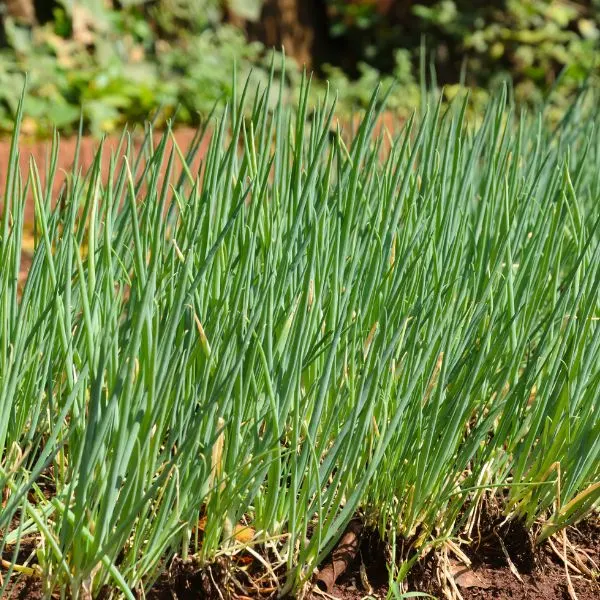
Chives are flowering plants in the genus Allium, to which some other aromatic plants like garlic, onions and shallots also belong. They are cultivated for the edible leaves and flowers they produce, which are then used to season food.
Because chives contain sulfur, they are good companions for arugula. They are effective at controlling pests, bacterial and fungal diseases and soil erosion. Their stunning purple-pink flowers bring insects to aid pollination and control pests. Use a barrier in the soil so your chives do not dominate the area.
2. Garlic
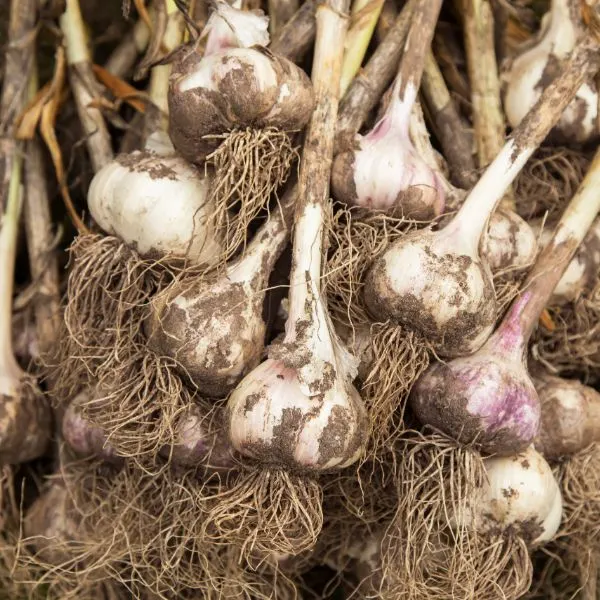
Garlic is a flowering plant in the genus Allium, alongside chives, leeks, onions and shallots. It produces a pungent or sharp smelling bulb divided into cloves which is used to season food or make an oil used by spraying to deter pests.
This allium is a good companion plant for arugula. Garlic produces and releases the antifungal compound known as sulfur. It keeps harmful animals away from your garden and grows very well beside your brassica.
3. Leeks
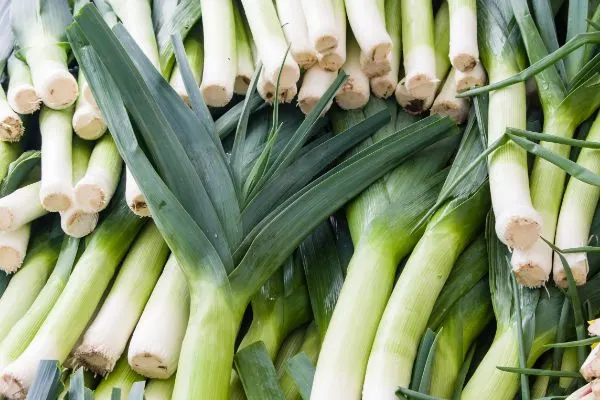
The leek is another flowering plant within the genus Allium. It possesses a large and slender white bulb and flat dark green leaves that overlap. Like other pungent members of its family named in this article, it is used in cooking.
Leeks are very good companion plants for arugula. With their sulfur content, they can help to repel some natural predators of the brassica, including aphids, flea beetles, deer, gophers, groundhogs, rabbits and other foraging rodents.
4. Onions
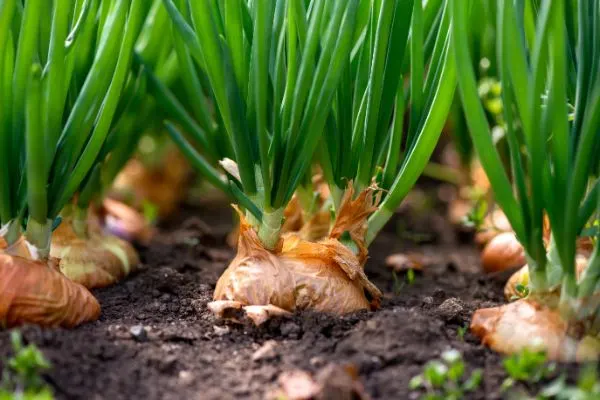
Onions are the most widely cultivated vegetables in their genus, the genus Allium. Also called bulb onions or common onions, they are close relatives of chives, garlics and scallions. The onion plant produces a sharp odor.
With an onion plant beside it, arugula is protected from pests, has its flavor improved and is comfortable with the light feeder. Because onions are susceptible to attacks from onion flies, grow another pungent plant, like mint, near the pair.
5. Scallions

Scallions or green onions in the genus Allium derived from various species in the genus Allium. They are typically milder in taste than other alliums and lack a fully developed bulb. Their hollow, tubular leaves are eaten cooked or raw as a vegetable.
Like other members of their genus, scallions are important for the purpose of pest control, they may improve the flavor of your arugula and they attract various useful animals like pest predators and pollinators.
Alliums and legumes tend to be good companion plants for your arugula plants. However, these kinds of plants do not like to grow with each other. For this reason, be careful not to plant beans and other legumes close by if you are planting arugula with any allium.
Flowers
6. Marigolds
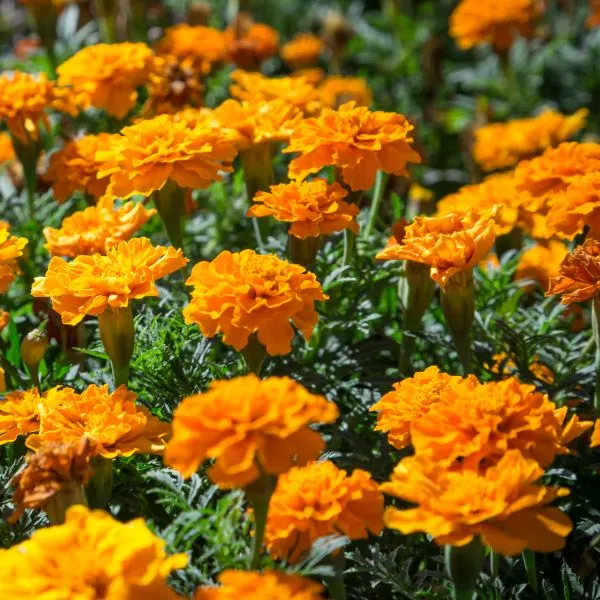
Marigolds are mostly herbaceous flowering annual or perennial plants which belong to the daisy family Asteraceae. They serve as good companions for arugula because of their flowers and their odor.
Their bold, beautiful and colorful flowers attract certain pests to themselves, serving as a trap crop. Their pungent odor is unpleasant to rabbits and some other pests that live in the ground. Marigolds repel pests, serve as trap crops, attract pollinators and bring pest predators to your garden.
7. Nasturtiums
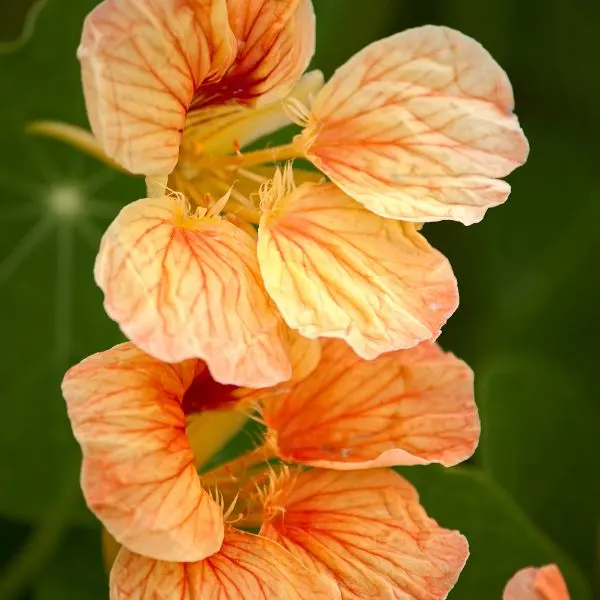
Also known as tropaeolum, Nasturtium is a genus of close to a hundred species of annual and perennial herbs. They have showy round flowers and are used in herbal medicine, for culinary purposes or in the control of pests.
Nasturtiums repel several insects that are generally harmful to brassicas with their peppery smell, serve as ground cover, inhibit the growth of weeds, help curb erosion, serve as trap crops and do not compete with your arugula.
8. Petunias

Petunias are flowering plants within the genus Petunia, of the nightshade family Solanaceae. There are 20 species within this genus and they are perennial plants mostly cultivated for their very attractive flowers.
They are good companion plants for arugula because they help to repel several garden pests, including some that adversely affect your arugula. These include aphids, beetles, leafhoppers and tomato hornworms.
Herbs
9. Basil
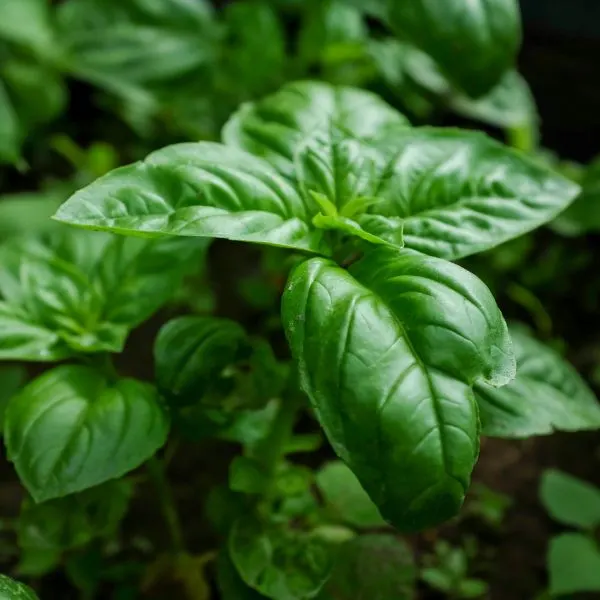
Basil is a herbaceous flowering herb belonging to the mint family Lamiaceae. Also referred to as great basil, it has a sweet, spicy and slightly peppery flavor. It is cultivated for its leaves and flowers that are used for food in several cuisines.
This plant can keep pests and rodents away from your arugula while attracting beneficial insects like pollinators and pest predators. Basil repels houseflies, mosquitoes and several other garden pests.
10. Borage
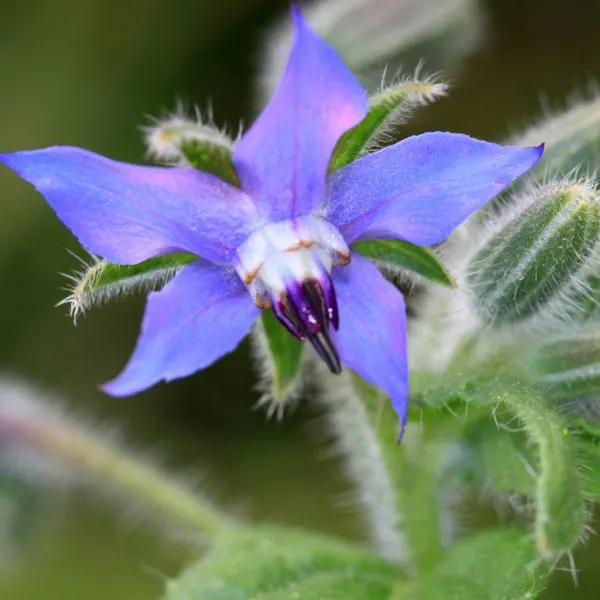
Also known by the name starflower, borage is an annual herbaceous flowering plant in the family Boraginaceae. The plant has complete blue, white or pink flowers with five narrow, triangular-pointed petals.
Borage is a good companion plant for arugula and other brassicas. It can aid pollination by attracting bees and other pollinating insects to your garden. It also protects plants from pests and brings up minerals like calcium from the soil with its deep taproots.
11. Chamomile
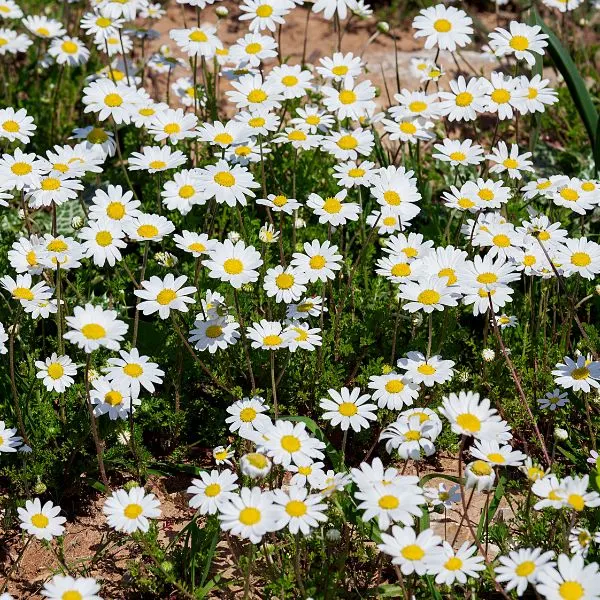
Also spelt camomile, chamomile is a flowering plant of the daisy family Asteraceae. Some parts of this plant are used in the making of healthy beverages because of its antioxidant properties. It is a good companion plant for arugula.
Chamomile can enhance the flavor of arugula. It repels insects and attracts beneficial ones like honey bees, hover flies, ladybugs and parasitoid wasps with its flowers. Space it properly to avoid unnecessary competition.
12. Chervil
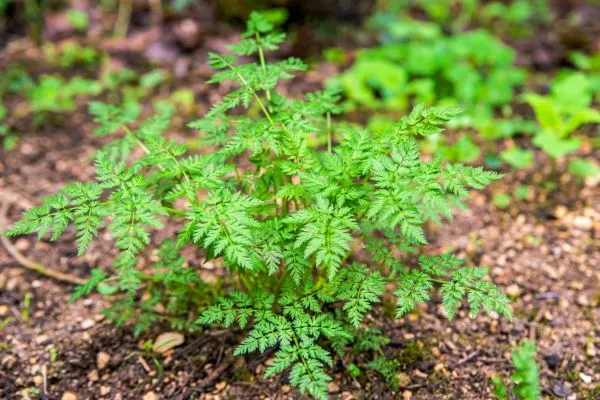
Chervil, French parsley or garden chervil is a delicate annual herb in the carrot family Apiaceae. It is used in the making of an oil with a resinous aroma. It is commonly used to season mild-flavored French dishes and has small white flowers.
Like many other herbs, chervil is a very good companion plant for arugula. It is aromatic, meaning that it has a strong scent. It is believed that this herb improves the taste and texture of nearby plants and repels pests like aphids.
13. Cilantro
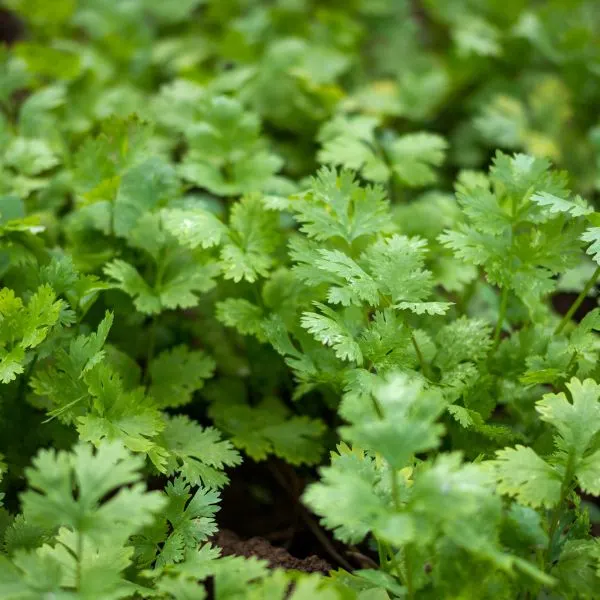
Known also as Chinese parsley, coriander or dhania, cilantro is an annual flowering plant in the carrot family Apiaceae with edible plant parts. The fresh leaves and dried seeds of this aromatic herb are the parts most used for culinary purposes.
Cilantro is a good companion plant for arugula as both grow well in similar conditions. It can keep harmful insects away from your vegetable crop as it attracts both pollinators and insects that prey on pests.
14. Dill
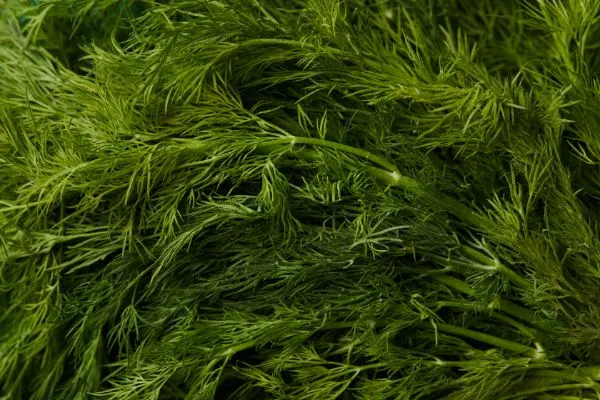
Widely grown in Europe and Asia, dill is an annual herb in the celery family cultivated for its leaves and seeds. These may be used as herbs or as food seasoning. Dill is another example of good companion plants for your arugula.
When it produces flowers, this plant can attract pollinators to your garden and draw pest predators. Arugula and dill have similar soil and care requirements too. Dill has long or deep taproots that break up the soil, reducing the chances of weed growth.
15. Mint
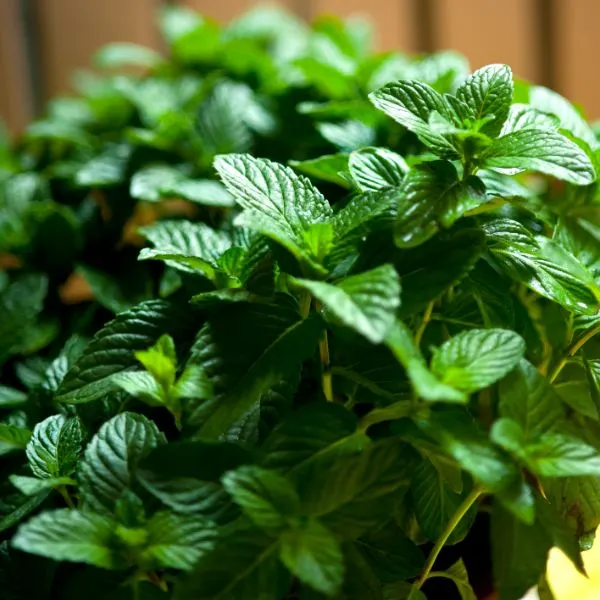
Mint is a genus of about sixty aromatic herbaceous flowering plants in the biological family Lamiaceae. Most plants in this genus are perennial, with several species, cultivars and hybrids. They tend to be good companion plants for arugula.
Mint plants can protect your crop from pests that would rather harm it, improve its flavor and attract beneficial insects. Mints tend to take over any area in which they are planted so plant them in a separate container and place it beside the arugula.
16. Oregano
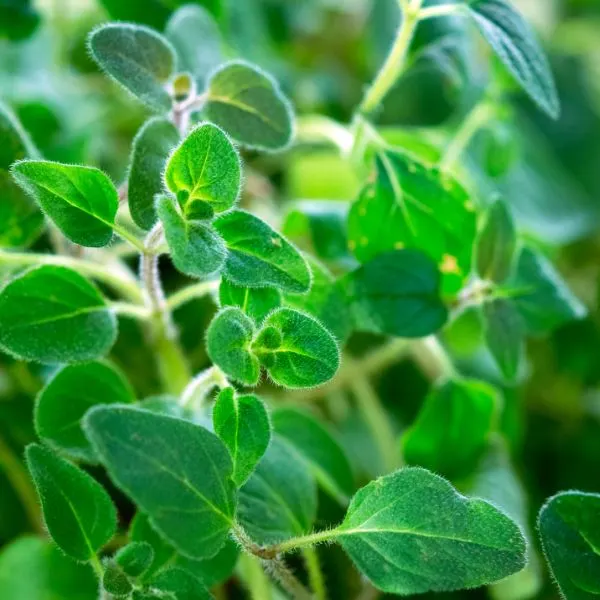
Oregano is a woody perennial plant that belongs to the mint family Lamiaceae. It is a herbaceous flowering plant, which means that it is an aromatic plant with a strong odor and it produces flowers by which it reproduces.
This is a good companion plant for your arugula. When in bloom, the beautiful pink, pinkish purple, purple or white flowers of oregano attract beneficial insects to your garden. It also has a strong, pungent smell that keeps pests away. Both plants are also comfortable in close proximity to each other.
17. Parsley
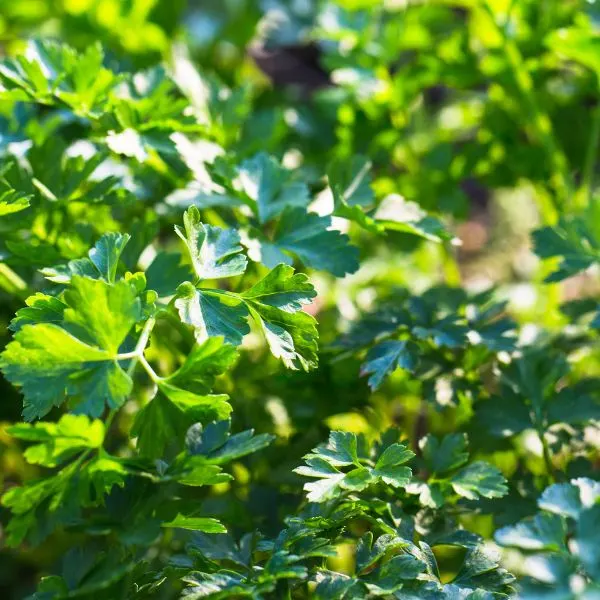
Parsley, also less commonly called garden parsley, is a flowering plant cultivated widely across the world for use as a medicinal herb or in cooking as a vegetable. This aromatic plant belongs to the biological family Apiaceae, the carrot family.
This plant is fairly easy to grow and beneficial to arugula. It repels several common pests and attracts useful insects. It can keep aphids, cabbage loopers, flea beetles and whiteflies away while attracting hoverflies, tachinid flies and beneficial wasps.
18. Rosemary
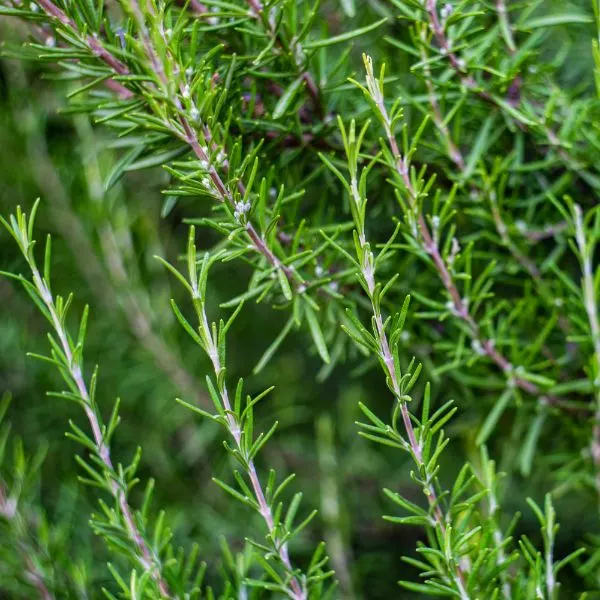
Rosemary is a low, woody perennial plant with thin and needle-like leaves which are fragrant and evergreen. Its flowers may be blue, white, pink or purple. It is a herbaceous flowering plant in the mint family Lamiaceae.
This plant produces an essential oil that repels different pests with its strong scent. This scent masks that of the arugula so that pests do not get drawn to and destroy it. The presence of rosemary is also believed to help improve the flavor and taste of nearby plants, your arugula inclusive.
19. Sage
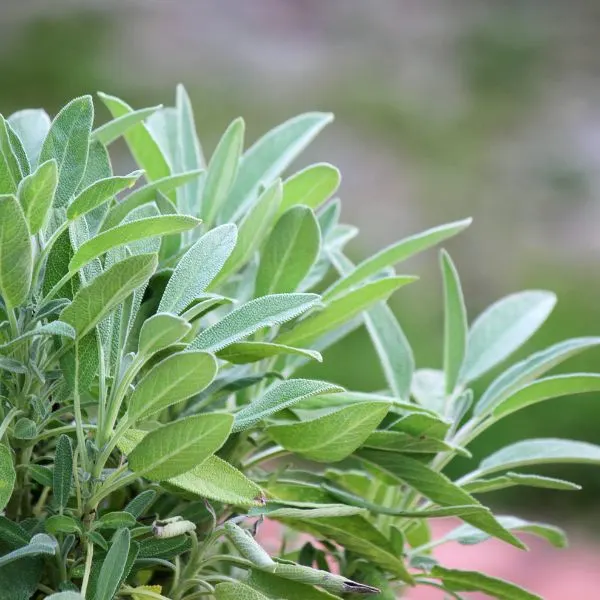
Sage, otherwise known as common sage, is a perennial plant easily distinguished by its grayish leaves and blue to purple flowers. It is another herb in the mint family Lamiaceae which is beneficial to your brassica. It is aromatic, bushy and edible.
The aromatic herb is a light feeder that does not compete with your arugula for nutrients and soil space. Its beautiful flowers attract insects that aid pollination. Its strong aroma can help keep several pests that attack your plant away.
20. Thyme

Thyme is an aromatic evergreen herbaceous plant in the mint family Lamiaceae. It is a perennial flowering plant closely related to mint, oregano and sage. It is yet another herb that serves as a good companion plant for arugula in the garden.
Thyme provides ground cover, deters pests from the garden and attracts pollinating insects to your plant. It keeps your plant cool and prevents weeds from growing. It also has antifungal properties and should be spaced properly from your arugula.
Legumes
21. Bush Beans
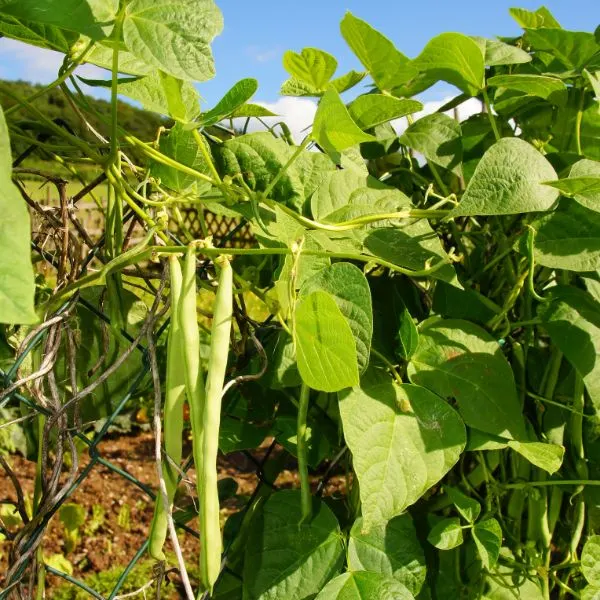
Beans are seeds of several genera of flowering plants that belong to the botanical family Fabaceae (the pea family). Their seeds (pulses) are then boiled, fried, baked or cooked by some other method and used as vegetables for humans or animals to eat.
As legumes, bean plants benefit arugula by fixing nitrogen in the soil using the nodules in their roots thereby improving plant yield. You can plant the shorter bush beans as they also provide good ground cover, preventing water loss from evaporation and the growth of weeds.
22. Peas
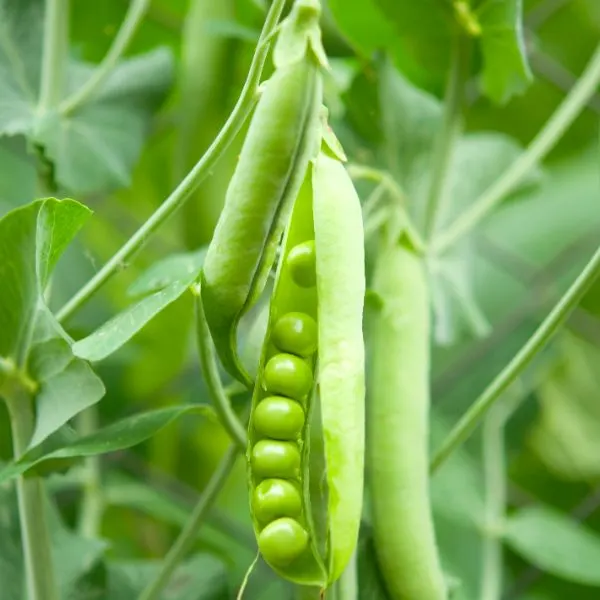
Peas are herbaceous flowering annual plants in the same biological family as beans, Fabaceae. Also known as garden peas, these plants are cultivated in various parts of the world for their edible seeds.
Like beans, they fix nitrogen in the soil and replenish used up nutrients in the soil. They are comfortable with your arugula because they have shallow roots that do not compete with those of your brassica. Both have similar growth needs too.
23. Pole Beans
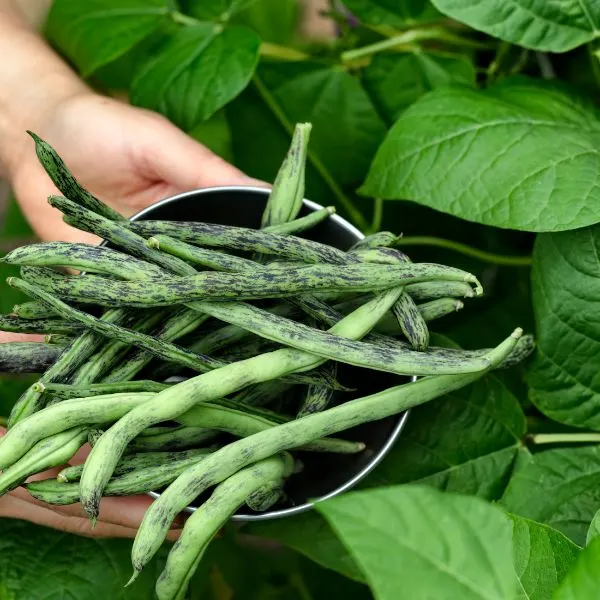
Beans are seeds of several genera of flowering plants that belong to the botanical family Fabaceae (the pea family). Their seeds (pulses) are then boiled, fried, baked or cooked by some other method and used as vegetables for humans or animals to eat.
Planting the taller variety of beans known as poles beans can shade your arugula from excessive sunlight. As legumes, the beans still benefit arugula by fixing soil nitrogen using the nodules in their roots. They also improve plant yield, provide good ground cover and prevent water loss and weed growth.
Although alliums and legumes are generally good companion plants for arugula and most cabbages, these crops do not grow very well together. They should be kept away from each other in the garden so if you want to plant legumes with your arugula, make sure not to add any alliums in the same area.
Root & Salad Vegetables
24. Asparagus
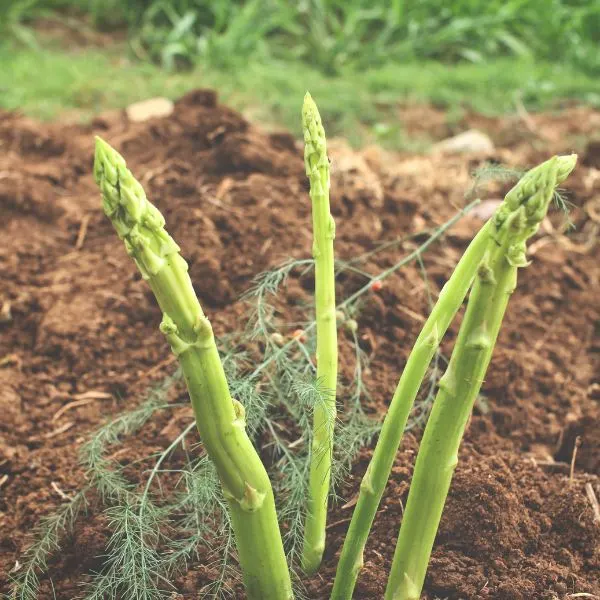
Known by some other names like green asparagus and sparrow grass, asparagus is a perennial flowering plant. It is aromatic and used as a spring vegetable, with its young green or white shoots cooked and eaten.
This plant has deep roots that break up clay or soggy soil that is packed together. They help loosen up the soil and absorb excess water in it. This reduces the chance of root rot and is ideal because asparagus and arugula grow well in similar conditions.
25. Beets
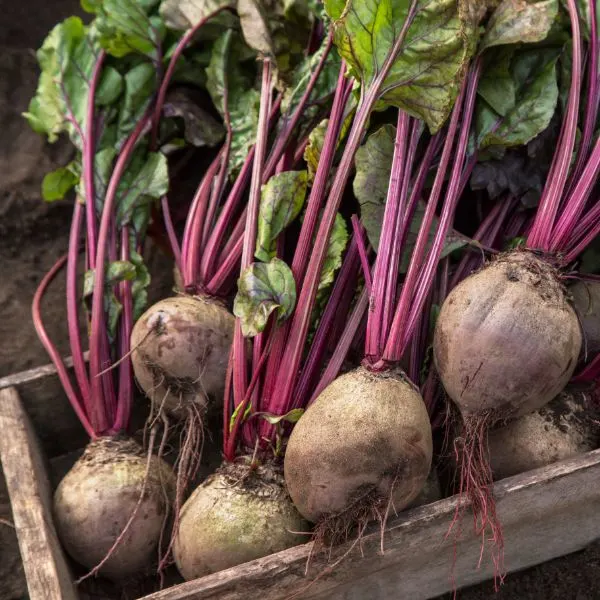
Beets are flowering plants in the amaranth family grown for their edible taproots, called beetroot, and leaves, called beet greens. They are cultivated for their edible taproot and their leaves may be prepared and eaten as vegetables.
They are good companion plants for arugula because they do not compete for soil nutrients and they fare well in similar soil. Space these plants well or add other pest repellent plants as both are susceptible to attacks from the same insect pests.
26. Carrots
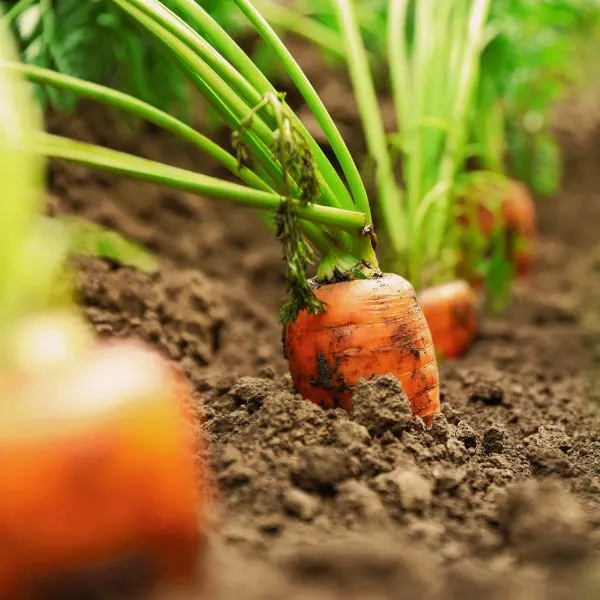
Carrots are edible root vegetables with usually orange taproots and green leaves at the top. Cultivars in white, yellow, red, purple and black also exist, with this root typically tapering. They are good companion plants for arugula.
These root veggies can enhance the flavor of arugula and other cabbages and help control weeds. Their greens also provide shade to your brassica. To avoid attacks from insects like aphids and carrot flies, grow this pair alongside plants like mint and rosemary to control pests.
27. Celery
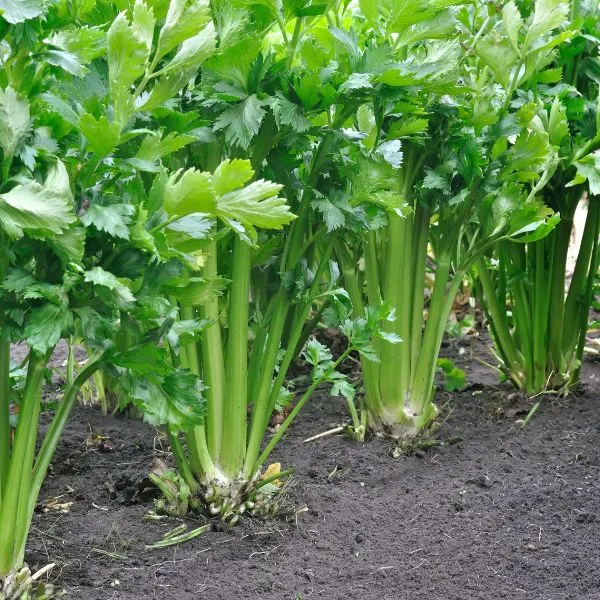
Celery is a marshland plant grown to be consumed as a vegetable. Its leaves and stalks may be used in cooking but this depends on the variety and location of the plant. It is yet another very good companion plant for arugula.
It has aromatic leaves that deter pests like the white cabbage moth while also attracting useful like lacewings, ladybugs, parasitoid wasps and other parasites of aphids. It attracts hummingbirds to your garden as well.
28. Lettuce
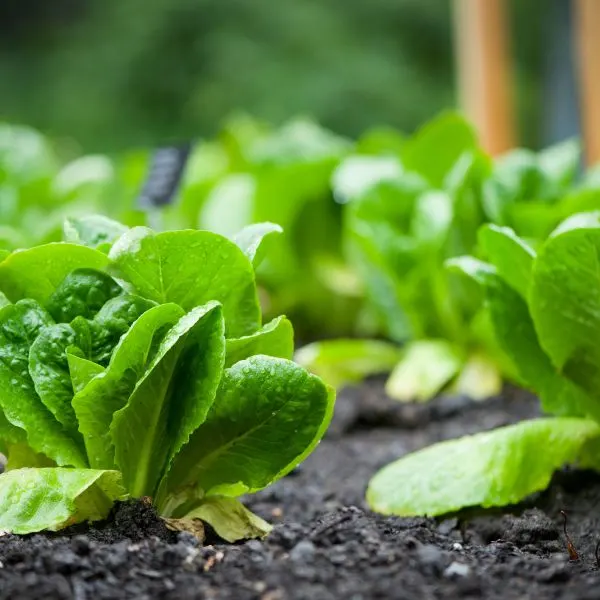
Lettuce is a flowering annual plant in the family Asteraceae mostly cultivated for its leaves, but also for its stems and seeds. It is used as a leaf vegetable, eaten most often in salads but may be added into other foods.
This is a quick growing crop that prefers cool weather, just like your arugula plant does. Lettuce has flowers that attract pollinators to your garden. It aids pollination and does not inconvenience your arugula. It is susceptible to pest infestation so plant a pest deterrent like mint around as well.
29. Radishes

A radish is a root vegetable also belonging to the biological family Brassicaceae, the cabbage family. Its roots are edible and so are the leafy greens atop them. They may be eaten raw, which they mostly are, or cooked.
Radishes are comfortable with arugula as these plants need similar care and nutrients. The roots of radishes loosen the soil surrounding your arugula and give it room to thrive. They also attract pollinating insects but should be spaced well to avoid competition with arugula, which is also a brassica.
30. Spinach
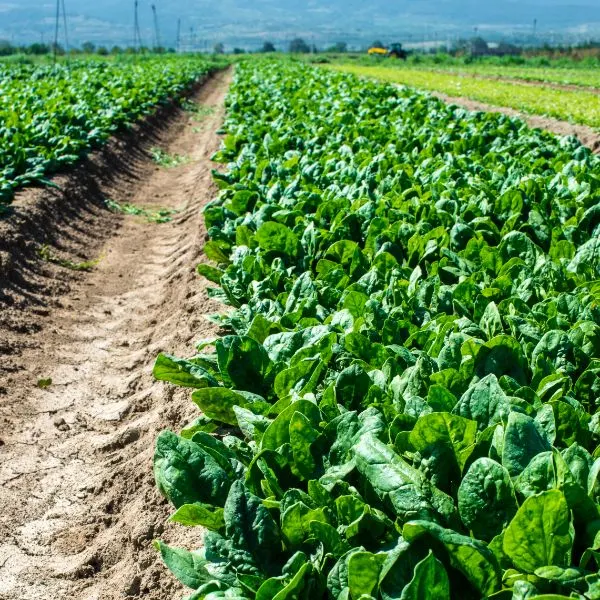
Spinach is a flowering plant in Amaranthaceae, the amaranth family. Its green leaves are edible and commonly eaten as a vegetable either raw or after preservation. Spinach is a good companion plant for most brassicas, arugula inclusive.
Its roots grow to a different soil level than those of arugula. These plants also have different nutrient requirements so spinach does not compete with your brassica. Spinach can serve as a good ground cover, maximizing the potential and space of the garden.
31. Swiss Chard
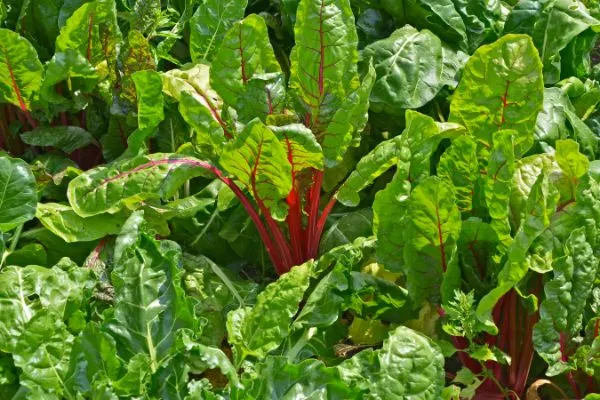
Known also as beet spinach, chard, leaf beet, perpetual spinach or silver beet, Swiss chard is a leafy green vegetable in the cabbage family Brassicaceae of the same species as beets. It is cultivated for its leaves and stalks which are usually cooked and eaten.
It is a good companion plant for arugula on the basis of convenience because although they might not boost each other, they require different nutrients from the soil and Swiss chard provides good ground cover in the garden.
32. Turnips
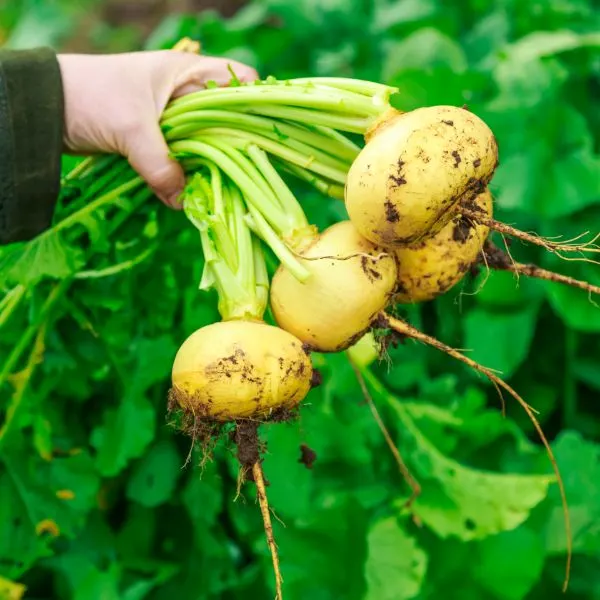
A turnip or white turnip is a flowering plant in the cabbage family Brassicaceae. This root vegetable is commonly grown in temperate climates worldwide for its edible, white and fleshy taproot which may be eaten raw or cooked.
Arugula tends to grow well with root vegetables, like beets, carrots, radishes and turnips. Their roots usually grow to different levels within the soil so they do not inconvenience each other. Also, these root veggies can break up tough clumps of soil, allowing arugula smile growing space.
Others
33. Cabbage
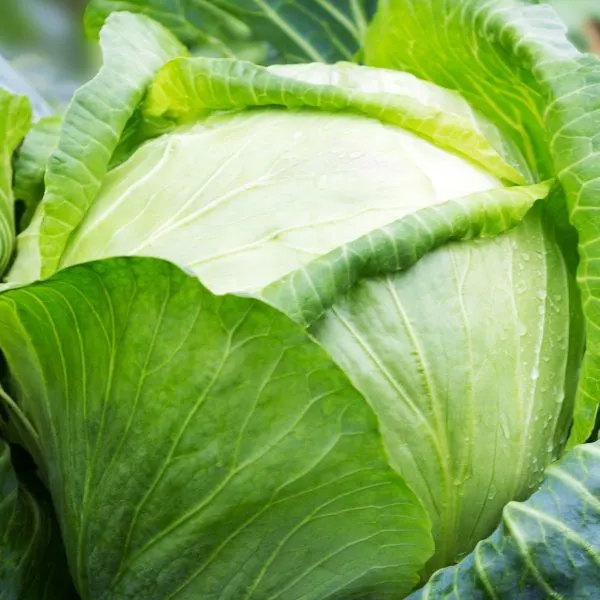
Cabbage is one of the few brassicas that serve as good companion plants for arugula. Cabbage is a flowering plant in the biological family Brassicaceae mostly grown as a vegetable crop for its edible and tightly packed leaves. Its leaves are layered and may be white, red or green.
Arugula has tender leaves that are attractive to flea beetles. It can be used as a trap crop for these pests as they are not easily controlled using insecticides. However, this puts your cabbages at an advantage and arugula at a disadvantage.
34. Corn

Corn or maize is a species of monocotyledonous flowering plants in the grass family Poaceae or Gramineae. Its leafy stalk produces separate inflorescences known as ears. When fertilized, these ears yield fruits, which are the seeds.
Although this species is notorious for taking up too much sun when brown beside any plant in the cabbage family, corn is a good companion plant for arugula. This is because of the shade and cool soil corn provides arugula.
35. Cucumbers
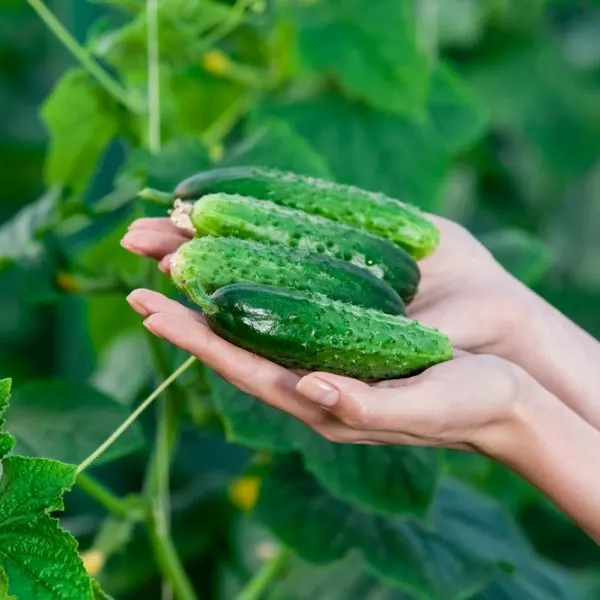
The cucumber plant is a creeping vine in the cucurbit family that bears cylindrical fruits which are used as vegetables for culinary purposes or eaten raw. Cultivating cucumber near arugula turns out to be a good practice.
Although cucumbers are vining plants which need ground space to crawl and tend to compete for sunlight, nutrients like nitrogen and space, they can provide much needed shade for arugula when they are grown up a vertical trellis.
Bad Companion Plants for Arugula
Brassicas
1. Broccoli
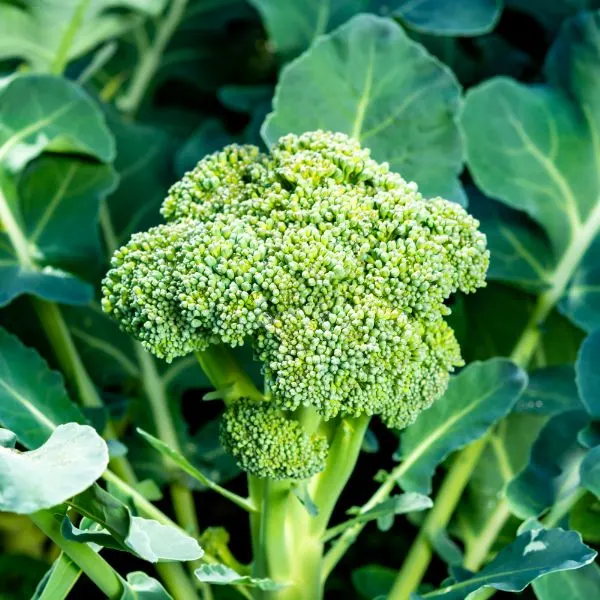
Broccoli is a flowering plant in the family Brassicaceae, the cabbage family. It has large, partly developed green flowers that make up its head, stalks and leaves which are the edible parts of the plant, the main reason it is cultivated.
Avoid planting broccoli and other brassicas like arugula together in the same area. Because both plants are heavy feeders, they require more nutrients than most other plants do and so they would compete for space and nutrients. They also attract the same kinds of pests.
2. Brussels Sprouts
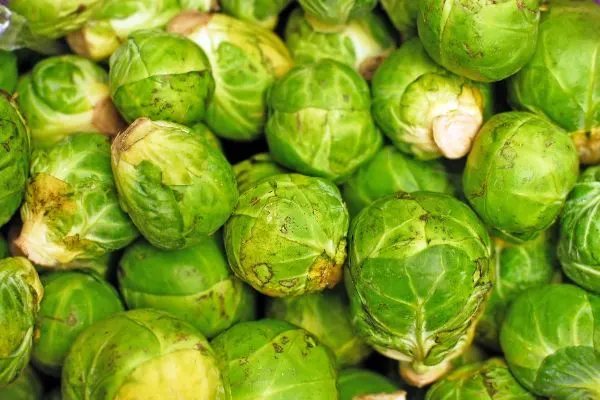
Brussels sprouts are flowering plants in the cabbage family grown for their edible buds. They are green leafy vegetables resembling very small cabbages. As brassicas, they are also very bad companion plants for arugula.
Both crops would battle for water, nutrients and space in the soil. They are both heavy feeders and would be adversely affected by this relationship. They are susceptible to attacks from some of the same pests as well.
3. Cauliflower
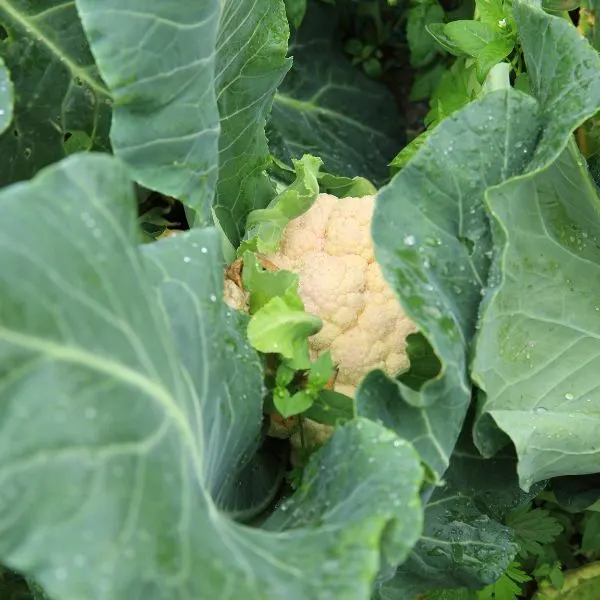
Cauliflower is another flowering plant in the Brassicaceae family, cultivated for its partially developed flowers, referred to as the head or “curd”. The head is edible and mostly in the colors white, yellow, green, orange, brown or purple.
It is another bad companion plant for your arugula. Growing them together is easy because they both belong to the same family and need similar amounts of light, water and nutrients but it leads to more problems than benefits.
4. Kale
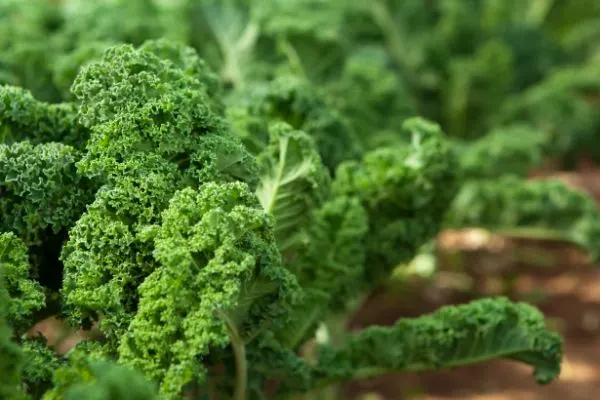
Another brassica that should not be planted near arugula is kale. Kale, also called leaf cabbage, is a cabbage cultivar grown for its edible green or purple leaves, or for use as an ornamental plant. It is a bad companion for this plant.
Although kale can deter pests from attacking your arugula, it is a heavy feeder too. It would battle with your plant for the nutrients and space in the soil. Also, they attract the same pests and can easily share diseases.
5. Kohlrabi

Yet another brassica you should not plant with arugula is kohlrabi. It is a variety of wild cabbage with thin stems and yellow flowers also known as the German turnip. Its stems and leaves are edible and it tastes very much like cabbage.
Separate arugula from kohlrabi to avoid the unnecessary and unhealthy competition for root space and soil nutrients that would otherwise occur if they are planted side by side. Both plants are also easily susceptible to the same diseases and pests.
Cucurbits
6. Cantaloupes
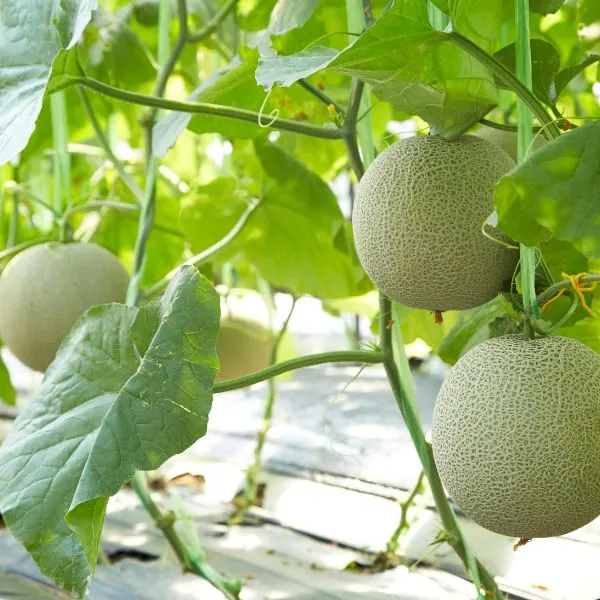
Cantaloupe is also known as rockmelon, spansek or sweet melon. It is a variety of a species known as muskmelon within the cucurbit or gourd family Cucurbitaceae. It is a summer fruit that comes in several sizes and weights.
Cantaloupes are vining heavy feeders that love sunlight. They are not good companion plants for arugula and most brassicas, much like most members of their family aren’t.
Growing these plants side by side to may result in the cantaloupe crowding out or choking your arugula. This competition for space, nutrients, water and sunlight will most likely lead to low yields in your brassica.
7. Melons
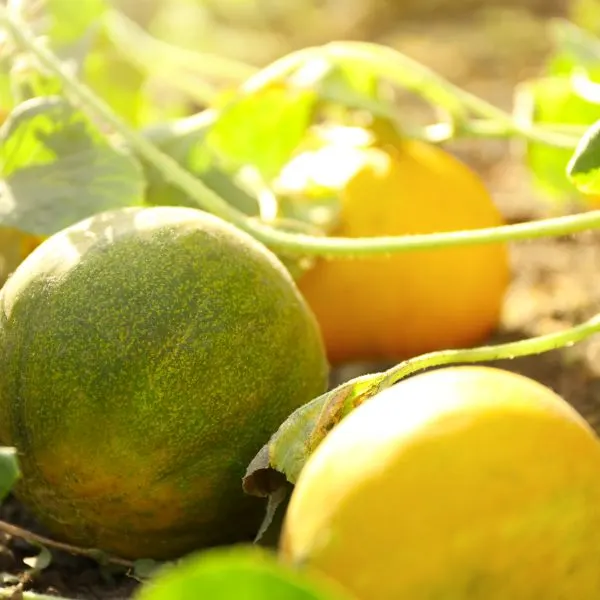
Melons are the various plants of the family Cucurbitaceae, the gourd family to which squashes or gourds belong. These flowering plants produce sweet, edible, and fleshy fruit. Both the plants and their fruits are referred to as melons.
Arugula does not grow well near melons; melons are bad companion plants for arugula. They can seriously fight for nutrients, sunlight and space. They may also attract similar pests, resulting in poor produce. They have large leaves that can shade out your arugula.
8. Pumpkins
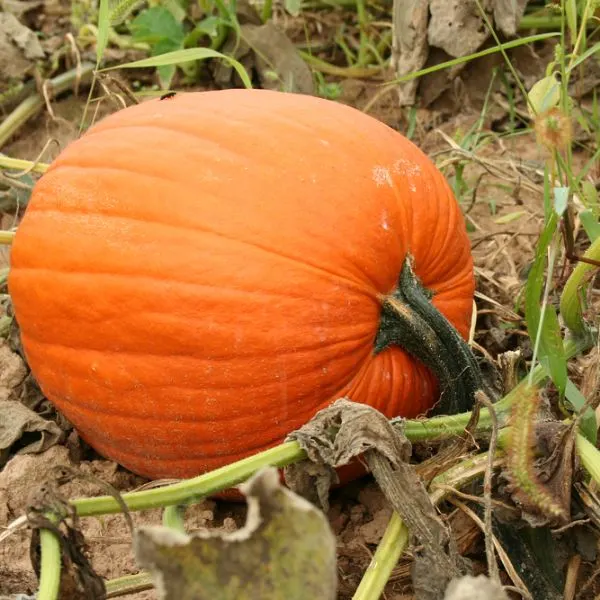
Pumpkins are cultivars of winter squash (fruits of plants in the genus Cucurbita that have hard rinds, mature in winter and may be stored for several months) that are round in shape and ribbed on their skin. They have deep yellow to orange skin and inside, they contain seeds and pulp.
Pumpkin plants are not good companions for your arugula because they shade the brassica too much. Pumpkin plants grow too tall and end up taking up too much sunlight. Sunlight is paramount for the growth and health of your plant by photosynthesis.
9. Watermelons
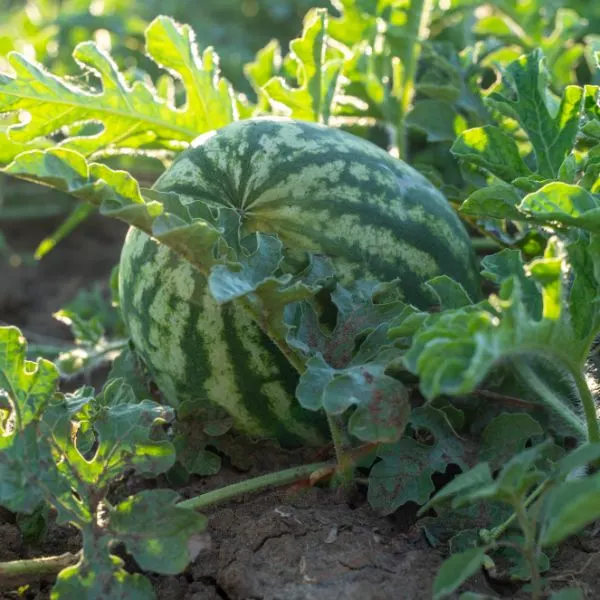
Watermelon is the name of a trailing flowering plant species which belongs to the gourd family Cucurbitaceae and the name of the edible fruit that the said plant produces. There are over a thousand varieties or cultivars of this popular plant.
Do not plant watermelons beside arugula. The melon plant hinders the growth of the other one. Watermelons compete for sunlight, space and nutrients with your arugula as well and they are attacked by some similar pests.
10. Zucchini
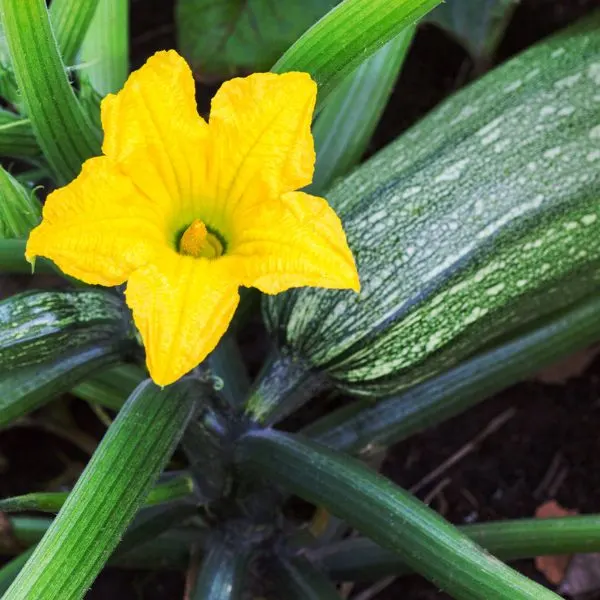
The vining plant called zucchini is also referred to as baby marrow or courgette. It is a summer squash, a herb grown for its fruits which are harvested when they still have immature seeds and soft rinds that are edible.
It belongs to the cucurbit family Cucurbitaceae. Most plants in the cabbage family tend to be heavy feeders but arugula is not. Although competition for nutrients may not arise between them, cabbages and arugula may compete for sunlight when they are planted together.
Nightshades
11. Eggplants
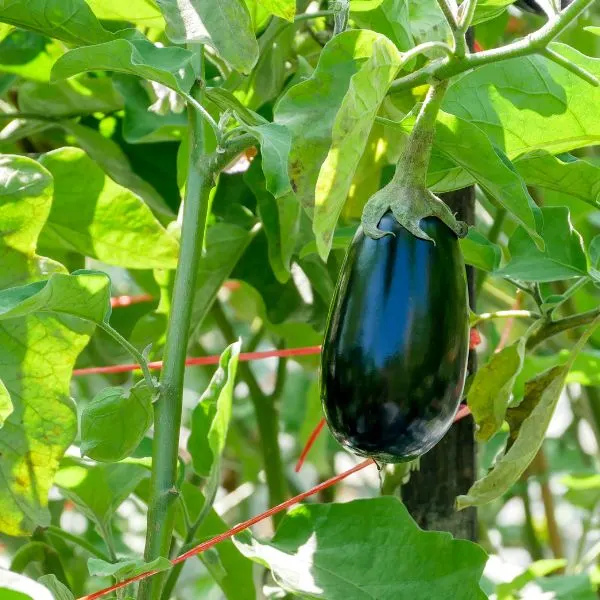
Eggplant, aubergine, or brinjal is a vining flowering plant in the nightshade family Solanaceae grown worldwide for its edible, spongy and mostly purple fruit. This fruit, also called eggplant, is used in various cuisines as a vegetable.
Nightshades also tend to be heavy feeders that need ample space to grow. They may be invasive and adversely affect the health of your arugula. Also, they need soil with a different pH level than arugula does.
12. Peppers
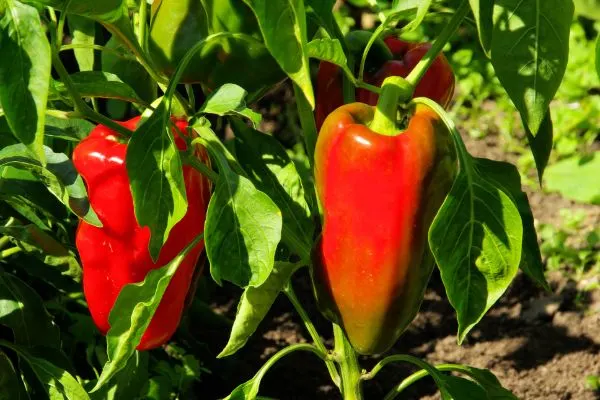
Like eggplants and tomatoes, pepper plants are flowering plants of the nightshade family. Several species and cultivars exist, even in various colors like red, yellow, orange, green, white and purple. They are bad companion plants for arugula.
Peppers should not be planted in close proximity to arugula because they may compete for nutrients with each other and attract similar animal and insect pests to your garden. Pepper and arugula also have different soil requirements and needs.
13. Potatoes

Potatoes are members of the nightshade family Solanaceae, like eggplants and peppers. They are perennial plants grown as root vegetables. These starchy tubers are also not suitable for growing near your struggles.
As root vegetables, their roots grow downwards and reach low depths. They also need relatively high levels of water for maximum growth. To avoid unnecessary harmful competition, do not plant these crops next to each other.
14. Tomatoes
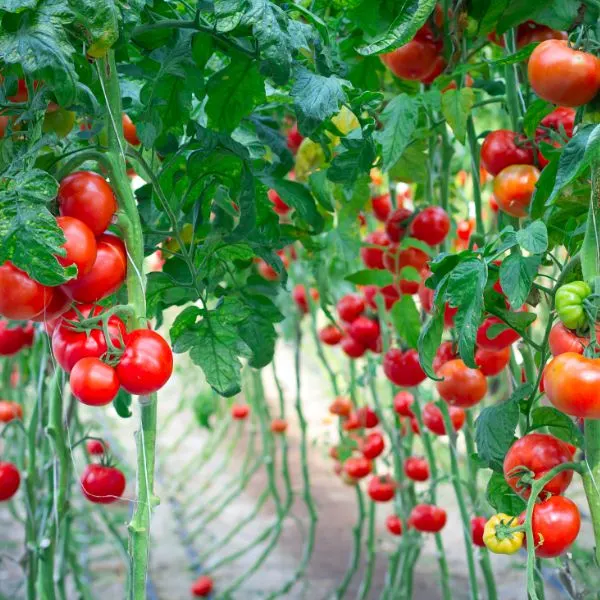
Tomatoes are South American plants of the nightshade family Solanum. They produce a widely grown mildly acidic fruit also known as tomato, with many varieties. Tomatoes are a glossy red or yellow color, pulpy and edible, eaten raw or cooked.
Planting tomatoes and arugula side by side can cause harm to both plants. Brassicas generally stunt the growth of tomatoes with their own allelochemicals. Tomato may affect the health of your arugula adversely and ideally grows in a more acidic soil than arugula.
Others
15. Strawberries

Strawberries are low perennial herbs with many runners and white flowers. They produce edible fruits which are small achenes scattered on the surface of an expanded red pulpy berry. They are very bad companion plants for arugula.
Strawberries are not ideal for cultivation beside any brassica because they contain allelochemicals which can inhibit the growth of your cabbage. They also attract pests like slugs and snails while growing in a spreading pattern or manner that is not ideal near arugula.
Infographic about Arugula Companion Plants

FAQs
What grows well next to arugula?

Alliums, flowers (like marigolds, nasturtiums, petunias), herbs (like basil, borage, chamomile, chervil, cilantro, dill, mint, oregano, parsley, rosemary, sage, thyme), legumes (like beans, peas), vegetables (like asparagus, beets, carrots, celery, lettuce, radishes, spinach, Swiss chard, turnips), cabbages and cucumbers all grow well next to arugula.
What can you not plant next to arugula?

Some crops you should not plant next to arugula are broccoli, Brussels sprouts, cantaloupes, cauliflower, eggplants, kale, kohlrabi, melons, peppers, potatoes, pumpkins, strawberries, tomatoes, watermelons and zucchini.
Can arugula be planted next to onions?
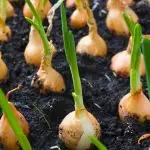
Yes, arugula can be planted next to onions. This is because onions and most alliums are good companion plants for arugula.
Conclusion
Arugula is an edible annual flowering plant in the cabbage family Brassicaceae. Listed and explained above are thirty-five (35) good and fifteen (15) bad companion plants for arugula.
The sourish and peppery leaves that these plants produce contain about 91.7% water, 3.6% carbohydrates, 2.6% protein and trace amounts of fat. They are also rich in vitamins and minerals.
They provide the body with vitamins A, A equivalent, B1 (thiamine), B2 (riboflavin), B3 (niacin), B6, B9 (folate), C, E and K, and the minerals calcium, copper, iron, magnesium, manganese, potassium, phosphorus, sodium and zinc.
Some health benefits of eating arugula include the provision of antioxidants, vitamins and minerals, protection of the body against several kinds of cancer, supply of lots of potassium and protection of body cells from damage.
While growing arugula, remember that it needs exposure to full sun in cool weather, well-drained, consistently moist soil with pH of between 6.0 and 7.0, consistent levels of moisture and loose loamy soil for the best or optimal results.
More plant guides
